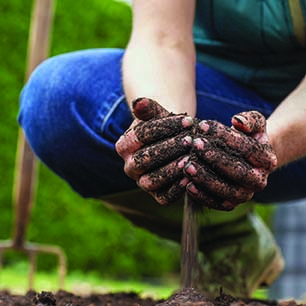Spring and summer may be the seasons most often associated with landscaping and lawn care, but tending to lawns and gardens is a year-round job.
If lawn and garden responsibilities dip considerably in winter, then fall is the last significant chance before the new year that homeowners will have to address the landscaping around their homes. Fall lawn care differs from spring and summer lawn care, even if the warm temperatures of summer linger into autumn.
Homeowners who want their lawns to thrive year-round can take advantage of the welcoming weather of fall to address any existing or potential issues.
Keep mowing
BUT adjust how you mow. It’s important that homeowners continue to mow their lawns so long as grass is growing. But as fall transitions into winter, lower the blades so the grass is cut shorter while remaining mindful that no blade of grass should ever be trimmed by more than one-third. Lowering the blades will allow more sunlight to reach the grass in the months ahead.
Remove leaves as they fall
Much like apple-picking and foliage, raking leaves is synonymous with fall. Some homeowners may wait to pick up a rake until all of the trees on their properties are bare.
However, allowing fallen leaves to sit on the ground for extended periods of time can have an adverse effect on grass. Leaves left to sit on the lawn may ultimately suffocate the grass by forming an impenetrable wall that deprives the lawn of sunlight and oxygen.
The result is dead grass and possibly even fungal disease. Leaves may not need to be raked every day, but homeowners should periodically rake and remove leaves from their grass, even if there are plenty left to fall still hanging on the trees.
Repair bald spots
Summer exacts a toll on lawns in various ways, and even homeowners with green thumbs may end up with a lawn filled with bald spots come September. Autumn is a great time to repair these bald spots. Lawn repair mixes like Scotts® PatchMaster contain mulch, seed and fertilizer to repair bald spots, which can begin to recover in as little as seven days.
Before applying such products, remove dead grass and loosen the top few inches of soil. Follow any additional manufacturer instructions as well.
Aerate the turf
Aerating reduces soil compacting, facilitating the delivery of fertilizer and water to a lawn’s roots. While many homeowners, and particularly those who take pride in tending to their own lawns, can successfully aerate their own turf, it’s best to first have soil tested so you know which amendments to add after the ground has been aerated. Gardening centers and home improvement stores sell soil testing kits that measure the pH of soil, but homeowners who want to test for nutrients or heavy metals in their soil may need to send their samples to a lab for further testing.
Fall lawn care provides a great reason to spend some time in the yard before the arrival of winter.




